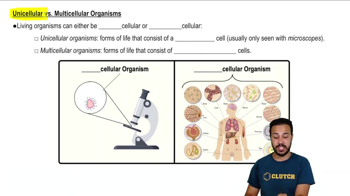Here are the essential concepts you must grasp in order to answer the question correctly.
Alternation of Generations
Alternation of generations is a biological process in which an organism alternates between two distinct forms: a multicellular haploid phase (gametophyte) and a multicellular diploid phase (sporophyte). This cycle is common in plants, algae, and some fungi, allowing for genetic diversity through sexual reproduction.
Recommended video:
Laminaria Life Cycle: Alternation of Generations
Haploid and Diploid Forms
Haploid forms contain a single set of chromosomes (n), while diploid forms have two sets (2n). In the alternation of generations, the haploid gametophyte produces gametes, and the diploid sporophyte arises from the fusion of these gametes, leading to a new generation. Understanding these forms is crucial for grasping the life cycle dynamics.
Recommended video:
Haploid vs. Diploid Cells
Multicellular Organisms
Multicellular organisms consist of multiple cells that work together, often forming complex structures. In the context of alternation of generations, both the haploid and diploid phases are multicellular, with the gametophyte and sporophyte representing different stages of the organism's life cycle, each with distinct roles and functions.
Recommended video:
Unicellular vs. Multicellular
 Verified step by step guidance
Verified step by step guidance Verified video answer for a similar problem:
Verified video answer for a similar problem:

